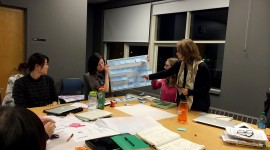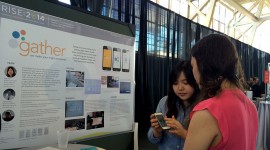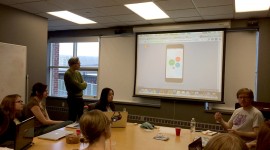The graduate-level course introduces human-centered design in the context of information visualization. It examines principles and techniques from information design, user-interface design, perceptual psychology and cognitive science. The goal is to help students develop a set of skills needed for human-centered design, such as learning to prototype, evaluate, and design a human-centered interface for a system.
The course is delivered as studio projects, individual and class critiques, lectures, discussions, and readings. In addition to participating in class discussions and critiques, students complete several short assignments leading to a final interactive prototype. The assignments help students uncover latent design needs by observing and understanding human behavior (what we feel, say, need, do, and so on), toward defining and solving a design problem related to the topic of the semester: social media.
Social media data and applications offer interesting opportunities and challenges for human-centered design. Individually or in groups of two, students followed an iterative process for solving a design problem informed by feedback from their selected audience. Their goal was to find ways in which they could enrich people’s experience in this broad field of social media in the context of information visualization.
You can view the online process book of three students, each in a different group:
• Maple Kuo
• Lauren McCafferty
• Vivian Sun
Photos taken in class throughout the semester, at Northeastern Research Expo, and at the final critique with guest Toby Bottorf from Continuum Design:





